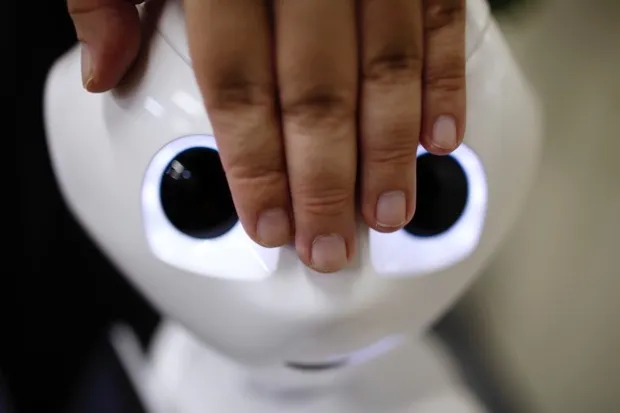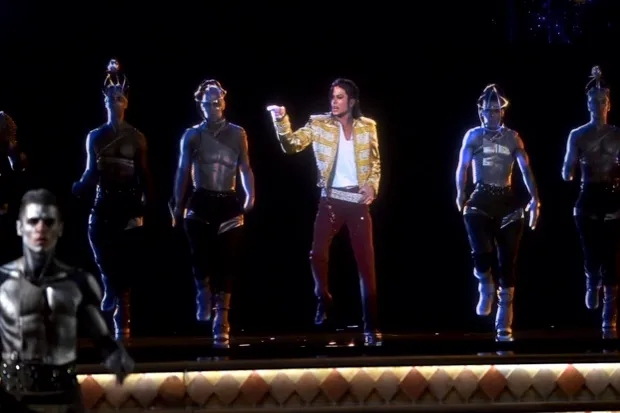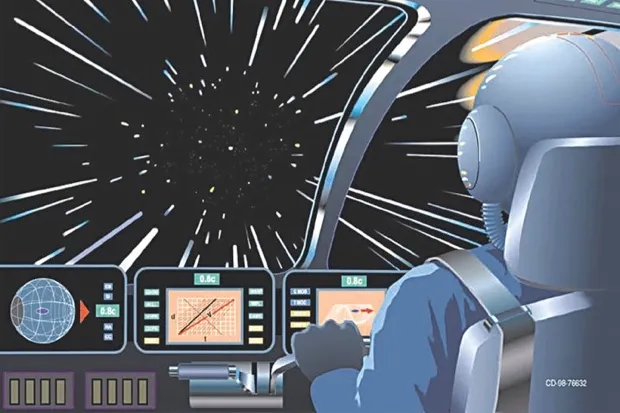Prosthetic robotic arms

Anakin Skywalker’s nifty ‘mechno-arm’ and Luke Skywalker’s robotic hand rely on two-way communication between the brain and the prosthesis: not only must the arm obey signals to move, grip, or swing a lightsaber, but it also needs to send signals back about textures, temperatures and other sensations. The first such prosthesis became reality in autumn 2015, thanks to research at Johns Hopkins University.
Their mechanical hand was fitted to a 28-year-old who’d been paralysed for more than a decade. Wires linked the hand to the wearer’s motor cortex – the part of the brain that controls movement – as well as the sensory cortex, responsible for identifying tactile sensations. This allowed the wearer to control their hand with thought, but also to ‘feel’ which of the hand’s fingers was being touched.
Emotional robots

When it went on sale in summer 2015, Pepper was hailed as the first emotional robot. Its makers, Aldebaran, claim that Pepper can analyse your facial expressions, body language and speech, then changes its behaviour according to your mood. It doesn’t, however, display the true artificial intelligence of C-3PO or R2-D2 – that’s at least several decades away. Still, people can form emotional attachments to pets. Pepper is not much more expensive than a pedigree dog, and far less messy.
Holograms

The holograms in Star Wars are snazzier than the stuff we’ve seen in reality. Sadly, holographic messages like Leia’s to Obi-Wan Kenobi are still science fiction. Yet holo-games may be just around the corner. Researchers at Swinburne University have developed a system that shines a pulsed laser on a flat graphene surface to create pop-up, floating 3D images. This would be perfect for board game/video game hybrids and communications – as long as you have a graphene dining table.
Until then, we'll just have to make do with bringing celebrities back from the grave.
Lightsabers

With powerful lasers, it is possible to build a handheld lightsaber. It would be short-range, though not quite limited to the one-metre beam of the films. It couldn’t sever an arm, nor could it cut through steel doors, but it could start fires or burn the skin.
In 2013, Harvard University researchers managed to make photons of light behave like a lightsaber, by manipulating them so they acted as a solid. However ‘lightsabers’ made in this way would just bounce off each other. If you want to slice bits off a Sith Lord, try a regular, old-fashioned, two-handed sword (eyewitness accounts of medieval battles say they cut through the limbs and even torsos of unarmoured combatants).
When the Trade Federation locks you in a steel vault, reach for your thermal lance instead, but expect it to take a few hours to burn through the door.
Faster-than-light hyperdrives

Faster-than-light (FTL) travel is the biggest gulf between reality and science fiction. As far as scientists know, the speed of light can’t be surpassed. But according to Harold “Sonny” White at NASA, FTL travel is theoretically possible – he suggests using a warp drive to distort space-time around a craft, bending the laws of physics. But with colossal amounts of energy required, and no tangible results so far, humans will have to stick to slower spacecraft for now.
Antigravity landspeeders

The landspeeders and speeder bikes in Star Wars work using ‘repulsor fields’ – a kind of antigravity. Scientists working on the ALPHA experiment at CERN have investigated whether antimatter – particles with the same mass as ordinary matter but opposite charge – might ‘fall upwards’, exhibiting a kind of antigravity. So far, however, there have been no conclusive results, so if you want a fast, floor-hugging chariot, your best bet is a ground effect vehicle.
Looking like a cross between an aircraft and a hovercraft, these use the aerodynamic interaction between the vehicle’s wings and the surface to fly just a few metres above the ground. We can’t promise you’ll look as cool as you would in a landspeeder, though.